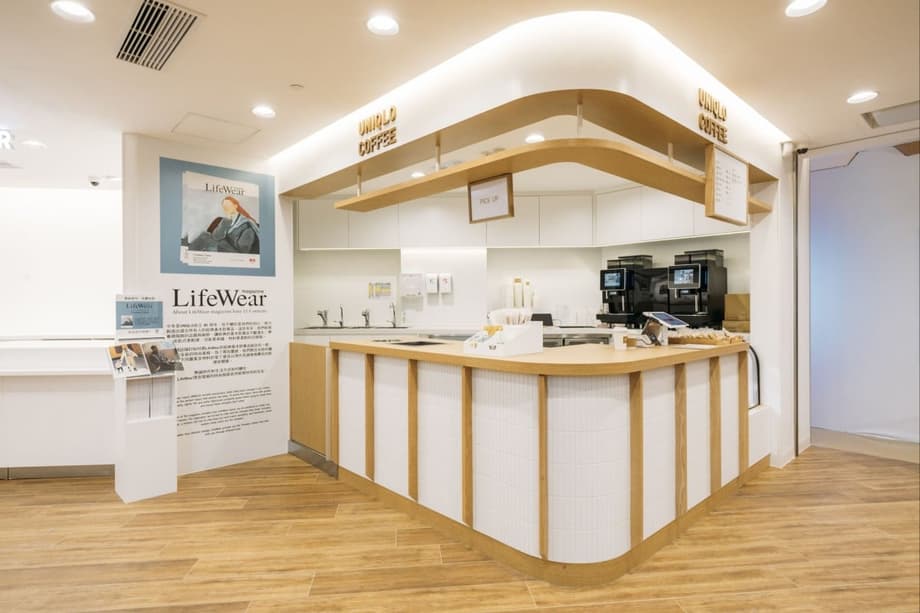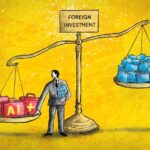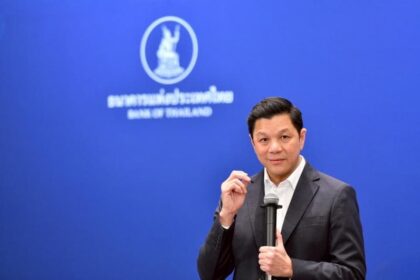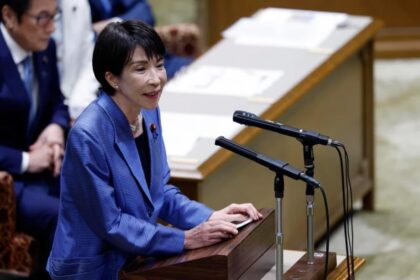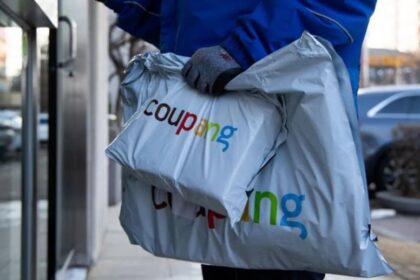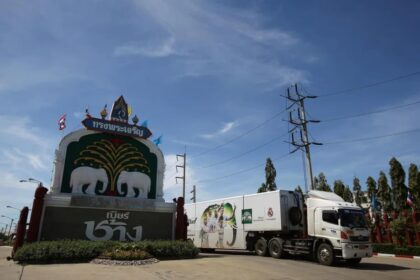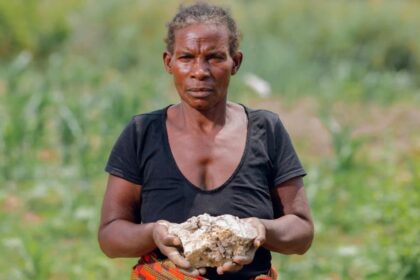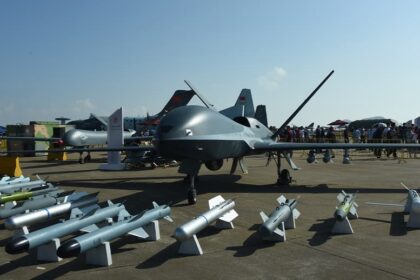A coffee fueled comeback in Hong Kong retail
Hong Kong’s shops are pouring lattes, cold brew and milk tea to get people back through the doors. Fashion labels and even finance brands are opening cafes inside stores or a few steps away, betting that a good cup of coffee can spark curiosity and longer visits. Uniqlo carved out space for Uniqlo Coffee at its Cityplaza flagship in Taikoo Shing, while Ralph Lauren’s Ralph’s Coffee now draws lines in Harbour City in Tsim Sha Tsui and Pacific Place in Admiralty. Dior and Louis Vuitton have staged stylish pop up cafes in recent months. Online brokerage Longbridge added a Longbridge Cafe in Mong Kok to meet clients and prospects in a relaxed setting.
- A coffee fueled comeback in Hong Kong retail
- Where fashion meets coffee in Hong Kong
- The strategy behind blending coffee with fashion
- How real estate trends made room for cafes
- A global movement, from Seoul to New York
- What customers really buy beyond the latte
- Risks, costs and the playbook for success
- How labels in Hong Kong are measuring payoff
- What this means for the city’s retail revival
- Highlights
The move comes as the city’s retail sector shows signs of healing. Official figures for August showed retail sales rising by 3.8 percent year on year, marking a fourth straight month of growth after a long slide that stretched from March 2024 to April 2025. August was the strongest month since December 2023, when sales rose by 7.8 percent. Brands see an opening to reconnect with young shoppers who want spaces to gather, take photos and try something new. Cafes tick those boxes, and they can be tuned to a brand’s look, taste and price point.
Where fashion meets coffee in Hong Kong
The cafe-meets-retail trend is visible across high traffic malls and streets. Labels are creating sit down corners inside stores, stand alone coffee counters in atriums, and short term pop ups that double as marketing theater.
- Uniqlo Coffee debuted at Cityplaza and is slated for the revamped Uniqlo store at Mira Place in Tsim Sha Tsui, scheduled to reopen on October 17.
- Ralph’s Coffee operates in Harbour City and Pacific Place, offering brand merchandise alongside espresso and pastries.
- Dior and Louis Vuitton have hosted pop up cafes, pairing limited menus with photo ready interiors tied to seasonal collections.
- Longbridge Cafe in Mong Kok gives a finance brand a lifestyle touchpoint to meet and educate customers.
- Vivienne Westwood Cafe, available in Hong Kong, channels the label’s punk romantic aesthetic in a tea room setting.
- Agnès b. Cafe & Fleuriste blends French pastries and floral bouquets in a setting fit for social media posts.
- Silk, a Hong Kong boba brand, opened a premium Boba Cafe in Kennedy Town inside a vintage building with retro cameras for customer snapshots and exclusive drinks inspired by local culture.
These projects work best in malls that already entice families and tourists to linger. Cityplaza’s ice rink, Harbour City’s harbor views and Pacific Place’s hotel links help cafes capture a steady flow of visitors. A latte becomes a reason to pause, look around and keep browsing.
The strategy behind blending coffee with fashion
Why are non food and beverage brands suddenly pouring so much energy into coffee counters and casual dining? The playbook is simple. Coffee creates a warm welcome, a signal that the shop is not only a place to buy, but a place to spend time. In retail strategy, this is often called a “third place,” a social space separate from home and work. The longer a person stays, the more likely they are to try on a jacket, discover a new line or buy a small accessory on impulse. The cafe itself also serves as a low cost entry to the brand. A shopper who may not be ready for a luxury handbag can still leave with a cappuccino and a branded cup, plus photos that circulate on social media.
Young consumers respond strongly to spaces that feel welcoming and photogenic. Coffee shops give brands a canvas to express their identity through materials, music and menu. The outcome is not just footfall. It is memory. When executed well, the coffee becomes part of the story of the visit, and that story can carry people back for the next drop or sale event.
Nathanael Lim, insight manager for beverages in Asia at Euromonitor International, says the cafe move is a conscious way to meet Generation Z and millennial shoppers where they are most active.
“Cafes are popular among young consumers and are used as a marketing tool to drive consumer traffic to their luxury fashion store.”
Some brands link cafes with a wider service mindset. Uniqlo, for example, has leaned into practical, in person services like repair workshops and book corners in select markets, framing stores as community hubs. In Hong Kong, the company describes Uniqlo Coffee as an extension of its simple, functional design ethos. A Uniqlo spokesperson explained the intent behind the concept.
“Uniqlo Coffee aims to complement customers’ shopping experience with its convenient location, comfortable and functional dining area, and a variety of drink and snack options.”
Inside the company, a store led approach known as koten keiei encourages each location to adapt to local needs. A cafe can help a flagship become a regular stop for neighbors, not just a destination during sales season.
How real estate trends made room for cafes
Property math helps explain why cafes are multiplying. High street and prime mall rents fell sharply in recent years. Across the four core shopping districts of Causeway Bay, Central, Mong Kok and Tsim Sha Tsui, shop rents declined by 29 to 47 percent between 2019 and 2023, according to Cushman & Wakefield data. CBRE estimates that high street rents were 57 percent below their 2014 peak in the first half of this year. Prime shopping center vacancy reached a record 10.5 percent at the end of June. JLL expects rents for prime centers to slip a further 5 to 10 percent this year as about 600,000 square feet of new space comes online in the second half.
Lower rents and higher vacancy have two effects. Landlords are more open to creative tenants that can animate corridors, and brands see a chance to secure better terms for larger footprints. A cafe module, whether five tables inside a store or a separate corner overlooking an atrium, becomes part of the calculus. It can raise dwell time, increase product discovery and turn a single purpose trip into a mini outing for families and tourists.
Hong Kong’s largest malls already behave like self contained neighborhoods. Cityplaza in Taikoo Shing mixes shopping, ice skating and casual dining. Harbour City is a sprawling riverside complex with art, luxury and family friendly zones. Pacific Place connects directly to hotels and offices. A cafe placed in the right spot can bridge fashion and leisure within these settings.
A global movement, from Seoul to New York
What is happening in Hong Kong mirrors a wider shift. Zara has rolled out Zacaffe, first in Madrid, then in Nanjing, with a new location set to open inside its renovated flagship in Myeongdong, Seoul. The concept serves coffee, desserts and co branded items like tumblers and totes, with local menus planned for each city. The company is weighing more sites in Asia, including Osaka.
Ralph’s Coffee has become a familiar sight from New York to Seoul, pairing American diner style treats with the brand’s green and white palette. Aritzia’s A OK Cafe has grown across North America, while Muji opened a food hall in New York’s Chelsea Market where a robot barista named Jarvis delivers drinks. High luxury names are in the mix too. Tiffany’s Blue Box Cafe in New York offers seasonal menus by a celebrated chef, and Longchamp launched a cafe in Paris’s Marais district to link hospitality with a creative showcase tied to the label’s collections.
These venues allow fashion houses to speak through taste, texture and service. Menus often include references to brand heritage or local culture. A city’s signature dessert, a floral motif on a foam cap, a playlist curated to match a runway mood, all contribute to a sense of place that traditional retail fixtures do not always capture.
What customers really buy beyond the latte
Academic research on luxury brand restaurants and cafes helps explain why these projects can move the needle. Studies that surveyed guests across Asia found that brand image and perceived quality are strong drivers of a person’s intention to return to a brand cafe and to buy items associated with the label afterward. Visitors often see these cafes as a gateway to a brand they admire. A small purchase in a beautiful space builds comfort and familiarity. It also creates social currency when photos and receipts get shared online.
The research points to a few patterns. Female customers tend to show higher loyalty to fashion brands and are more likely to revisit a brand’s cafe. Materialism and the strength of the brand’s image correlate with revisit intent and product purchase. Generation had less influence than expected, which suggests classic fashion names can attract a wide age range when the hospitality piece feels authentic and premium. This aligns with what is visible on the ground in Hong Kong, where teens, office workers and tourists queue together for a latte under a famous logo.
For brand leaders, the takeaway is practical. The cafe must reflect the core promise. Furniture, staff uniforms, playlist and plating should feel like the product line. Many labels collaborate with respected chefs or specialty coffee roasters to match culinary quality with fashion prestige. The moment a latte tastes ordinary or the queue feels chaotic, the spell breaks and the project risks diluting the label rather than strengthening it.
Risks, costs and the playbook for success
Running a cafe is a different business from selling clothes. Margins, staffing, food safety and supply chains introduce daily complexity. Brands face a choice between partnering with an experienced operator under license or building their own food and beverage team. Owning the operation gives tighter control of service and storytelling. Partnering reduces risk and can speed up launch, though it requires careful oversight to avoid a mismatch in standards.
There is also a brand design challenge. Cafes draw crowds, and long lines can frustrate shoppers nearby. Quiet luxury can be at odds with a loud espresso bar. The best executions create clear flow, integrate seating with product discovery, and keep service quality high during peak hours. Measurement matters too. Success is not just cups sold. Brands track foot traffic, dwell time, conversion inside the adjacent store, content shares and repeat visits. Limited time menus and capsule merchandise help spike interest during slower seasons.
How labels in Hong Kong are measuring payoff
Hong Kong brands are already experimenting with metrics that go beyond sales. When the Fukuoka born coffee label NO COFFEE staged a pop up at the East Hong Kong hotel, it lined up tactics aimed at younger audiences. The plan included an Instagram ready space with the brand’s dog mascot, a launch party with a DJ, a temporary tattoo station, exclusive merchandise and social media collaborations. Results were tracked through ticket sales, merch demand, engagement and foot traffic to the venue. This kind of reporting helps teams fine tune future events and decide whether to expand into a permanent cafe.
Nathanael Lim from Euromonitor describes cafes as a high value first encounter for non food and beverage brands seeking to widen their customer base.
“By establishing cafes, this is a first touchpoint to connect and attract more consumers into their physical stores and market their core business.”
For Uniqlo in Hong Kong, the cafe complements the brand’s everyday utility. The company frames store leadership at the local level as a way to tailor services to neighborhood habits. That ethos supports experiments like coffee counters near fitting rooms or lounge seating that invites shoppers to pause before making decisions.
What this means for the city’s retail revival
Cafes give brands a tool to compete with e commerce by making the visit itself feel special. A cup of coffee cannot be delivered in the same way a jacket can. The aroma, the music and a table where friends can talk all anchor a memory. In a market that saw prolonged weakness, the return of modest sales growth has intersected with a new wave of creative tenancy. Cafes help fill space, bring in mixed age groups and refresh the message of labels that want to feel relevant to young people without heavy discounts.
Local culture is an advantage. Hong Kong is a city of tea rituals and snack stops. Concepts that nod to that heritage, from Hong Kong style milk tea recipes to retro decor in old buildings, stand out. Silk’s Kennedy Town cafe leans into that idea with vintage fixtures and a menu that blends classic tastes with new textures. This attention to place can help brand cafes become neighborhood favorites, not just arcades for tourists.
Highlights
- Fashion and finance brands in Hong Kong are opening cafes to grow foot traffic and dwell time in retail spaces.
- Uniqlo Coffee at Cityplaza and Ralph’s Coffee in Harbour City and Pacific Place are drawing steady crowds; Dior and Louis Vuitton have staged high profile pop up cafes.
- Retail sales in August rose 3.8 percent year on year, the fourth month of growth after a long slump.
- Shop rents fell sharply from 2019 to 2023, and prime mall vacancy hit 10.5 percent, giving brands and landlords room to experiment.
- Academic studies show brand image and perceived quality drive return visits and product purchases after cafe experiences.
- Global examples include Zara’s Zacaffe in Madrid, Nanjing and soon Seoul, Longchamp’s cafe in Paris and Muji’s food hall in New York.
- Successful brand cafes align design and culinary quality with the label’s identity, and measure success through traffic, dwell time and social sharing, not just beverage sales.


